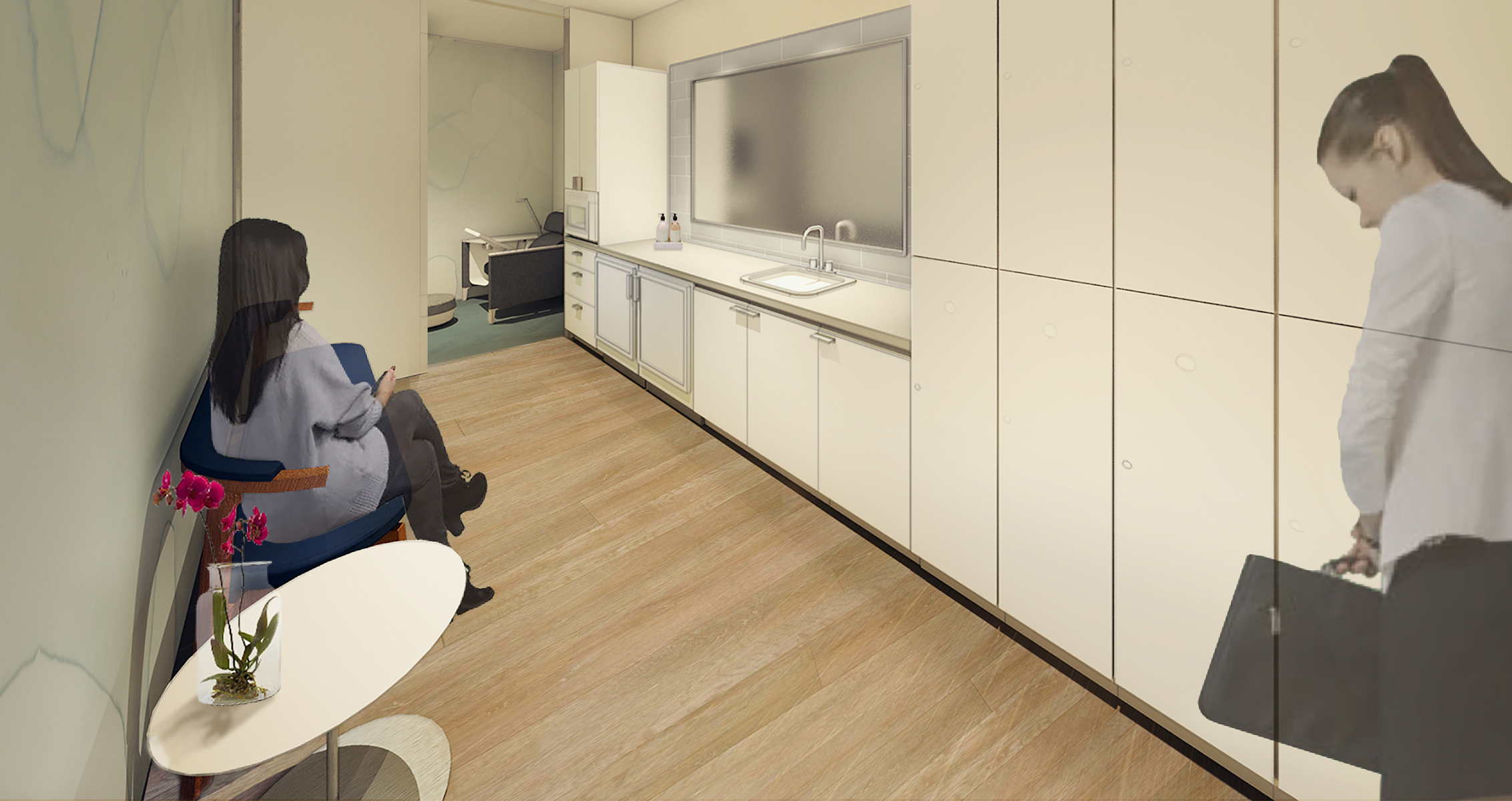“Imagine the difference if every lactation room was designed by women who’ve actually used one.” This, a tweet by one Melinda Gates, clearly struck a chord; it got 1,075 likes (and gave me a thrill to see my ideas endorsed by such an inspiring advocate for women).
Imagine the difference if every lactation room was designed by women who’ve actually used one. https://t.co/4htY3ZfSZW
— Melinda French Gates (@melindagates) April 30, 2018
Two months ago, Fast Company invited us to conceptualize the ideal lactation room for its Provocation series. I recruited two designers, Lara and Alyssa, to start a discussion about the pain points around pumping at work and potential solutions through design.
I was fortunate to return to work after maternity leave with not one, but two, wellness rooms in our office – both equipped with all the necessities and a comfy chair, to boot. Many are not so lucky. While employers with 50 or more employees are required to a provide “a place, other than a bathroom, that is shielded from view and free from intrusion from coworkers and the public, which may be used by an employee to express breast milk,” this law is not always enforced.
This is at odds with not only the societal pressure to breastfeed but also the compelling business case for providing lactation rooms: Companies with lactation rooms can retain nursing moms at a rate of 94%. Additionally, experts in workplace well-being have promoted the value of these spaces. Fitwel, a leading certification system focused on employee health, gives dedicated lactation rooms the biggest point value of any of its evidence-based design and operational strategies.
So why aren’t companies investing more in these spaces? Though intentions are often good, it is far easier to design for specific user needs when you can connect to the experience of a space. Who better to advise on the design of an operating room – a surgeon or an accountant? Following the same logic, our team was able to identify the elements that seem to check the box, but sometimes miss the mark – like an outlet that doesn’t work (makes pumping difficult), or a chair that doesn’t enable continued work during a pumping session.
If having a lactation room is the baseline, and offering the essentials (fridge, sink, chair, table, outlet) is the next step, then what’s the final destination on the road to perfectly seamless pumping experience?
At a baseline, our lactation suite was unique in that it provided a dedicated space versus one that doubles as a wellness or phone room – something more doable for a large company with more users and real estate. We also prioritized privacy, recognizing that the trend of communal pumping rooms will not be for everyone. Below were additional features of our design:
It optimizes utilization.
Alyssa wisely observed that many moms want to pump at the same times, based on a standard baby feeding schedule and a company’s typical work hours. Efficient utilization becomes an even greater issue when there’s a sudden peak in the number of users, as was the case for me when returning to work in late 2016.
The anteroom allows people to get in and out of the adjoining pumping rooms, freeing those rooms up for others who need access. By placing the sink and other items outside the main pumping area, but still in a private space, an employee could be cleaning and/or sanitizing pump parts while the next person starts pumping. This also lets people drop off pump parts or pick up milk in the evening without disturbing someone who may be using the room.
Another pain point I personally experienced was missing my designated pumping slot (if say, a conference call went long) and not knowing when I could in the room. This was complicated by the fact that our room was available to all staff as a wellness room, so others were in there for legitimate reasons when there were no scheduled pumping slots.
I would head to the room to try to grab a slot only to find it occupied. At that point I could return to my desk, only to head back to check on the status, or I could wait awkwardly outside the room waiting for it to be free. In this situation, the anteroom concept would provide a space to lounge or continue working.
It enables meaningful “collisions.”
Not all companies offer forums – whether physical spaces or policies – that support new moms returning to the workplace. The anteroom in this design is a place where women in the same season of life can connect while in passing or virtually. A monitor for messaging can include announcements, educational material about breastfeeding, or virtual forums about topics concerning this user group, i.e. childcare, local activities, etc.
It goes beyond the basics.
The sky was the limit for our design challenge, so we outfitted our dream lactation room with some extras to enhance the experience: hospital-grade pumps, a microwave (for sanitizing pumping parts), a chair that can function as a task or lounge chair; a work counter for a laptop; a supply box containing spare pump parts, snacks and water; and soap for cleaning pump parts.
While companies in the U.S. have collectively made great progress in adopting lactation rooms, there’s still room to grow! This modular system optimizes efficient utilization, without much additional cost or square footage compared to the typical lactation room. It offers both privacy and community, and the ability to work or relax. All of this nets a solid ROI for companies seeking to support new moms returning to the workforce.
A space designed for moms by moms: taking user experience to a whole new level.
